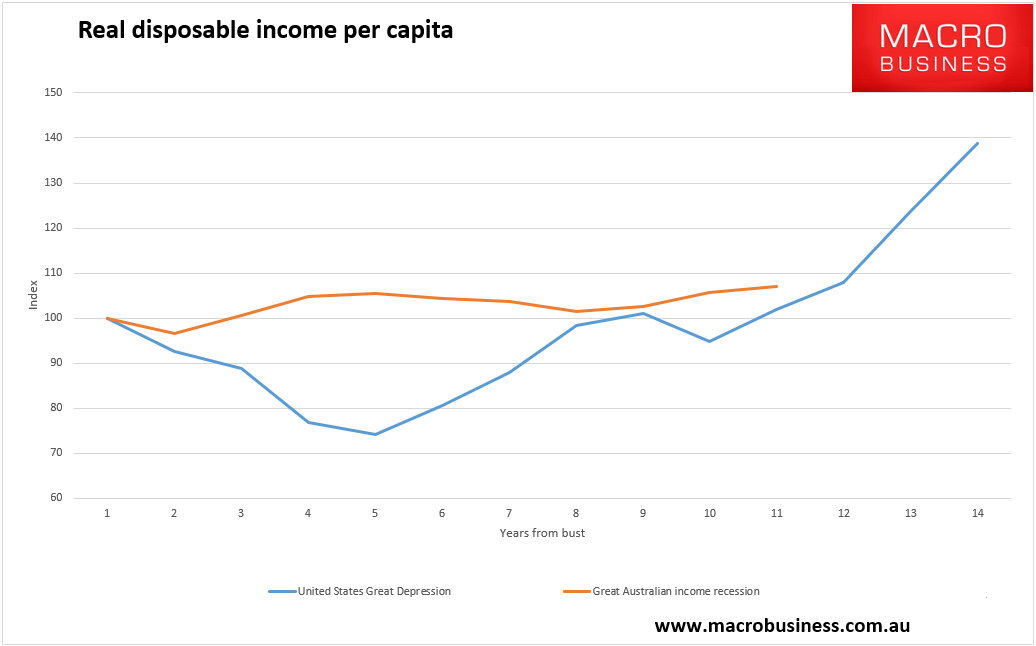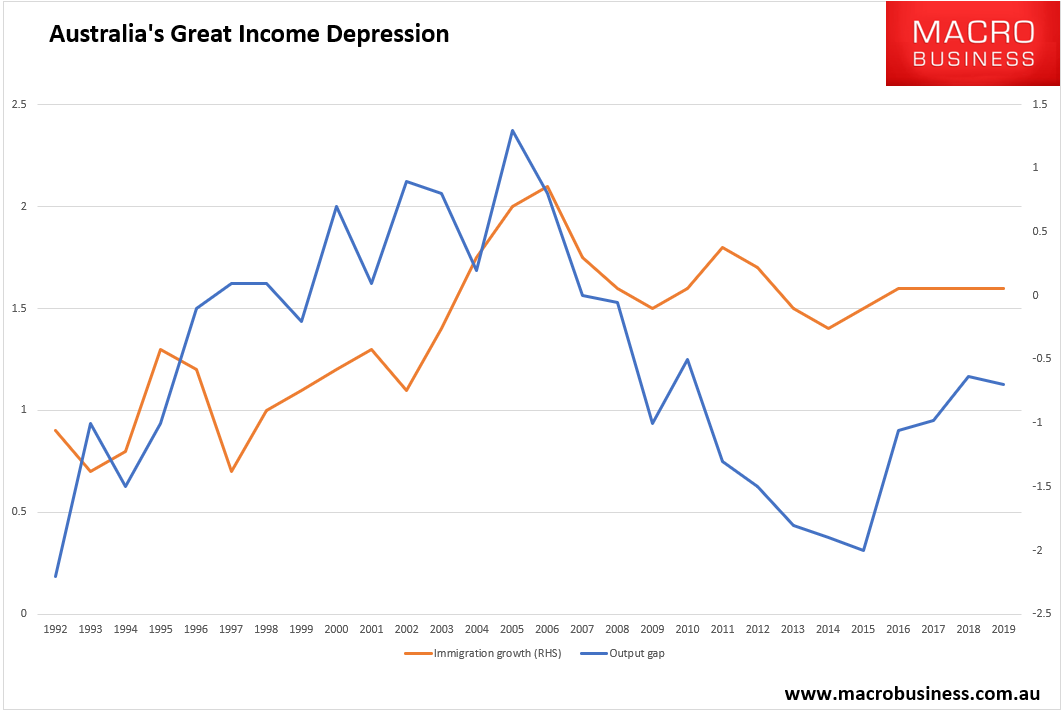Yeh. The elite will tell you that you’re a whinger or a racist. To suck it up and move on. But you aren’t. What has happened to Australian income is not only abnormal. It is historic. Worse, it is only half over.
The OECD describes real net income per capita (RNNPC) in the following way:
While money may not buy happiness, it is an important means to achieving higher living standards and thus greater well-being. Higher economic wealth may also improve access to quality education, health care and housing.
Household net adjusted disposable income is the amount of money that a household earns, or gains, each year after taxes and transfers. It represents the money available to a household for spending on goods or services.
In other words, it is the best measure of per capita living standards in the national accounts.
Why is that you didn’t know that? Why are you plied with GDP and other useless gauges instead? Simple. GDP is easy to generate for politicians. You just need more imputs for more outputs. The challenge is to get more from the same number of inputs, that brings home the bacon in the form of rising living standards.
Pollies hate RNNPC. It means tough decisions and sectional losers for collective gain. It means they have to actually lead rather than lie, something our current scum are incapable of. So, instead we’re stuck with GDP as a measure of your living standards even though it is so manipulated these days that it is not only misleading, it is actively hiding an historic crash in your living standards on a par with the Great Depression.
How can I say something so preposterous? It’s a simple fact:
In terms of the best measure of living standard that we possess, real net disposable income per capita, post-GFC Australia has its nose just in front of the US Great Depression and it’s about to fall behind.
Yeh, that’s right. All of those sepia stained photos of shabby men in trench coats lined up at soup kitchens and in the dole queue. That’s you.
How can that possibly be? How can you not know it?
It’s because the structure of economic slack is today different than it was in the 1930s. The “output gap” – a ratio of excess supply over demand – that drives high unemployment is more hidden. In the 1930s, if an industrial ecoonomy ground to a halt then mass layoffs of blue collar workers would result. It was obvious what was happening to all.
These days it is very different. Our jobs are much more in the services industries which can limit hours more easily without doing layoffs. It can also slash or steal wages more easily, another effectively hidden job cut. As well, if you are unfortunate enough to lose your job then you can work for Uber. Sure, your living standards collapse but you’re not some obvious problem for everybody else.
And so we have The Great Australian Income Depression hidden in plain sight.
What’s caused it then? How can be addressed so that living standards rise again? Who is to blame.
It began with the GFC. That was the first signal that the pretend economy that Western nations had created would crash as they outsourced their real economy to China. For a short while Australia was protected from that owing to its massive mining boom. But when that went belly up in 2011 the real trouble began. The crash was expressed through a terms of trade shock that didn’t end until 2016. Falling iron ore and coking prices represented a massive national pay cut that, over time, was distributed nation wide in falling profits and wages.
But that was four years ago and those same commodity prices have boomed ever since so why hasn’t the income depression ended, I hear you ask? There are a number of reasons but the most important is captured in the following chart:
Australia has carried a massive output gap – that is, too much supply – ever since the GFC but much more so since 2011 as the twin growth drivers of mining and houshold debt-funded consumption both stalled.
As you can see, before 2008, as a nation we always allowed immigration to fall when the output gap appeared, to prevent too much competition in the labour market. But afterwards, we did the opposite and ramped up immigration. Worse, the sources of immigration deteriorated radically from highly paid, skilled workers into desperate and cheap warm bodies from anywhere in the Third World.
Under this macroeconomic regime, any and every time that eceonomc slack appears it will always land on the labour market in the form of weak wages. The rest is history: a permanent income depression for workers as every time the output gap closes, more cheap foreign labour floods in to widen it again, despite the demand that they also bring.
So, what began as an external shock under Labor, which was too idiotic to cut immigration lest it be labelled racist, has since morphed into a worker-devouring Kracken of permenent Coalition policy that today has Australia rivaling Great Depression USA for falling living standards.
Don’t be fooled into thinking that it had to be this way. It didn’t. Although there was always going to be some adjustment after the mining boom as national competitinvess was repaired, the use of mass immigration to hide the correction has ensured that certrain sectors are protected while other suffer more than they should. Households and tradable sectors have born the brunt of the adjustment while property, banking and retail (until recently) were protected. This happened instead of the far better national interest policies of productivity reform, competitiveness reform and crashing one’s own currency.
Alas, the same policy bastardry it is still happening and the income depression is therefore not over. Ahead, the Chinese economy is going to slow to a virtual standstill and the second leg in the falling commosity price story will transpire, denuding the nation of huge slabs of income once again.
With the Coalition determined to pump in cheap foreign labour to support capital, while Labor inexplicably cheers it on, that will again direct all of the adjustment onto labor as Australia’s Great Income Depression runs for another lost decade.
Leaving you far worse off in terms of the magnitude of drop in your living standards than those sorry gents in the faded pictures of 1940.



